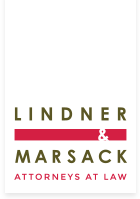By: Jonathan T. Swain
Beginning April 14, 2015, the new NLRB election rules will take effect. They promise to have a profound effect upon an NLRB election process that has remained relatively unchanged for the last 75 years.
If unions are able to take advantage of these new rules, which are designed to expedite the election process, they may be able to engineer the first successful resurgence in organizing in our time. Those who say organized labor is on its last legs may be proven right, but these new rules are designed to give union organizing a renewed spring to its step.
If these new rules are designed to make union organizing easier, are there steps that employers can take to increase their odds of remaining union-free? The answer is yes! Here’s how:
It’s all about the calendars
Under the old rules employers had about six (6) weeks (39 days on average) from petition to vote to respond to an organizing effort. Since employers enjoy broad free speech rights to lawfully discuss the issue of unionization during this time, the facts are that once fully informed of what it means to be in a union, how bargaining really works, the costs of union membership and loss of their workplace independence, employees often rejected the union’s solicitations. Since unions and the NLRB can’t silence free speech with new laws or regulations, the one thing they can do is limit its opportunity.
Therefore, the new regulations seek to shorten the time from petition to election, to a two (2) to three (3) week period, instead of the current six (6) weeks.
This will act to substantially limit the opportunity for the traditional employer communications, including factual handouts, informational meetings, questions and answers and a review of the union’s record.
What do the new rules provide for?
- Expedited pre-election hearings.
- Pre-hearing employer position statements in which the employer waives any issues not raised one day before the hearing.
- Delaying voter eligibility questions until after the vote.
- Expanded employee information provided to unions, including employee email addresses and phone numbers, if known.
- Greater NLRB control over the place, date and time of the election.
What can a proactive employer do?
As we know, if a union can get at least thirty percent (30%) of the employees to sign authorization cards [it almost always waits until it has over sixty percent (60%)] it can petition for an election. The key is to act now to make a union unnecessary to your employees, while at the same time taking advance steps to prepare for a drive should it come.
What to do?
- Review your handbooks, rules, policies and overall employee relations approach. Are they lawful, fair and understandable? Do employees have an outlet for complaints and problem-solving? Will your rules and policies pass muster with the NLRB?
- Train, train, train. The best defense against employee dissatisfaction is well trained supervisors and managers. If they are good managers and leaders of people, employees will follow, as will organizational success.
- Vulnerability assessment. Review not only policies and managers, but how employees view your organization on a variety of fronts, such as wages, benefits, communications and the like. Employees want to feel a part of their organization.
- Action plan. Just as you have a disaster response plan for fires, severe weather or civil unrest, have one for the union drive. Be ready to respond immediately and have a broader plan ready to put into action. Be sure to have it preapproved by labor counsel. The old motto of “be prepared” certainly applies and the employers that take it to heart will continue to be in the best position possible to avoid a union’s efforts to organize its employees.
The old motto of “be prepared” certainly applies and the employers that take it to heart will continue to be in the best position possible to avoid a union’s efforts to organize its employees.
